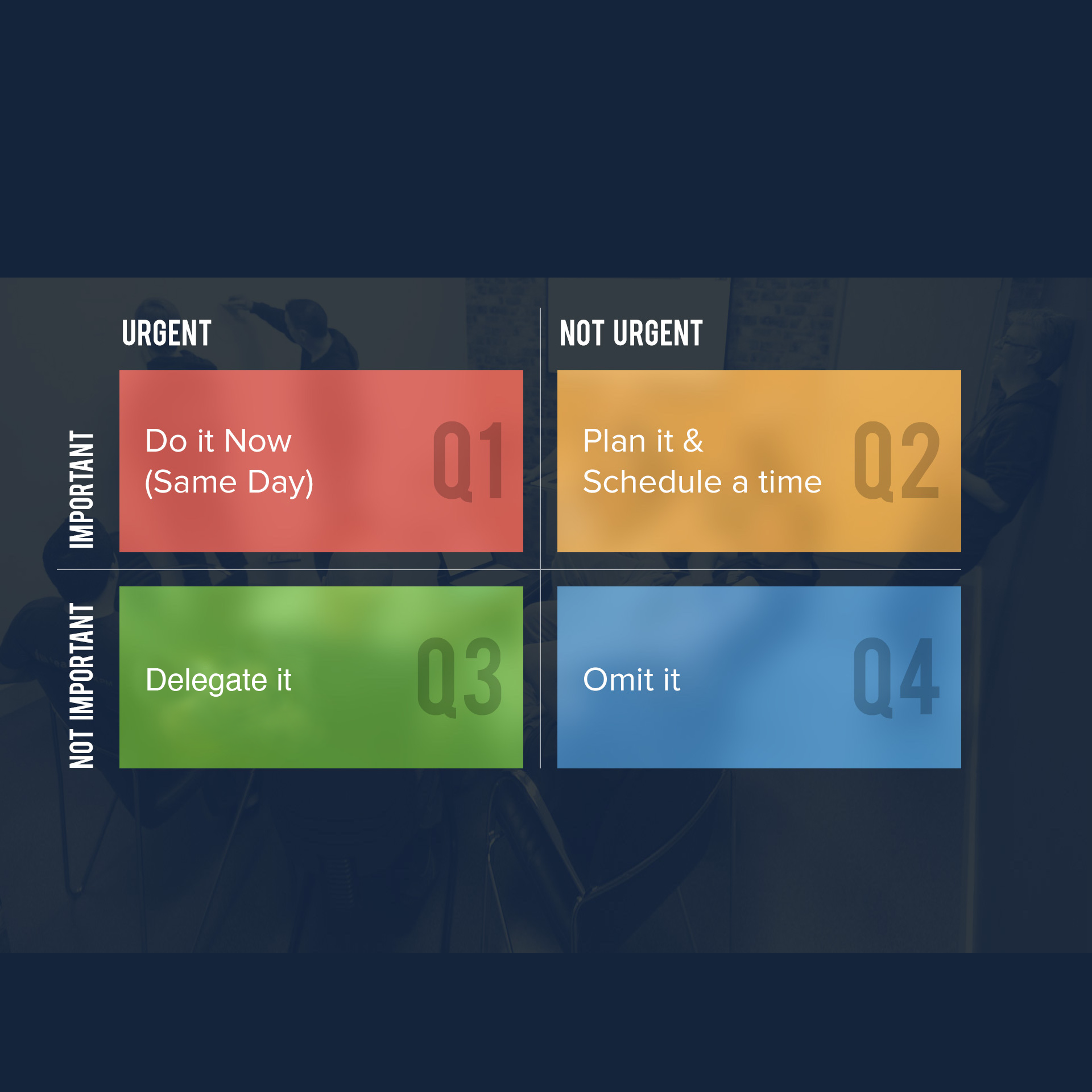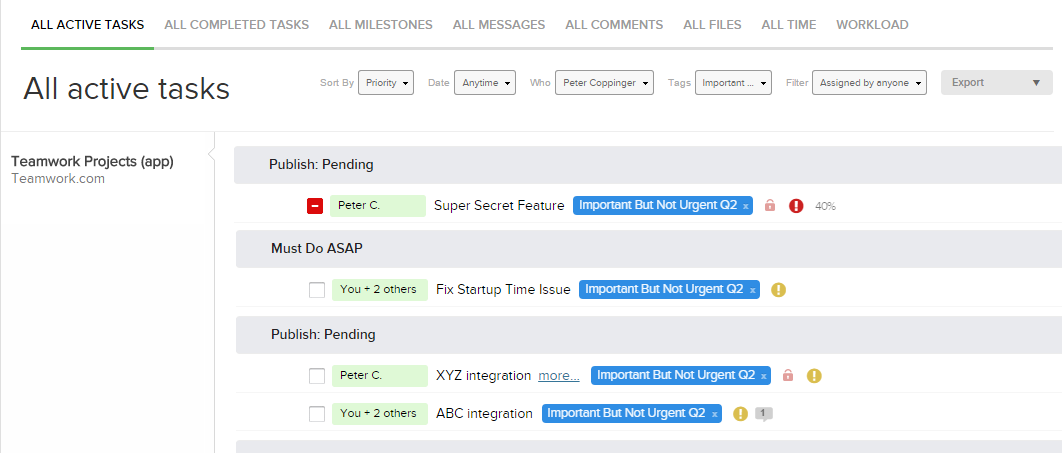Time is our most valuable and finite resource, yet it is often squandered on low priority tasks, or time wasting activities without properly keeping our time management in check. One of our favorite approaches to reclaiming power over your time is with the Time Management Matrix. We even implement it internally, using the Tags feature within Teamwork Projects and featured it here on our blog last month.
Also, known as the Eisenhower Box, for its creator the late US Army General, President Dwight D. Eisenhower, the Time Management Matrix is a method of categorizing tasks and managing time for optimum effectiveness and efficiency. Stephen R. Covey helped to spread the tool’s reputation through his own books and work. The four quadrants themselves are astonishingly simple. The matrix has four elements of a task (Important, Not Important, Urgent, Not Urgent) and where two elements intersect is the designated priority.

Tasks that must be done the same day or immediately are Important & Urgent, needing to be done without delay. This would be if a customer is having a major issue that needs resolving or if there is a deadline that cannot be altered. The task is important and a quick resolution is needed.
These are likely the tasks that bring value, though they are not always fun so just jump in and get them done. As tempting as it can be, do not start with the small or easy tasks first, go with one of the more challenging or complex ones so, once complete, you have a sense of accomplishment and momentum.
Tasks that are Important & Not Urgent would be planned for on a time scheduled to complete the work. This would be if printed materials need to be proofread and printed for a trade show in six months. The task is important, but there is ample time to complete it. Resist the urge to procrastinate over these tasks just because the deadline isn’t imminent. Setting up a decoy due date in the foreseeable future gives you something to work towards.
If the task requires collaboration, or asking someone for something, send these requests early and follow-up often to make sure this item doesn’t become urgent due to neglect. Over time, some of these tasks will shift to become both urgent and important, but with proper scheduling and focus, you will devote the bulk your energy to scheduled and organized tasks in this section of the matrix.
Tasks that are Urgent & Not Important are best delegated to a trusted member of your team. This would be if another department needs help that day or the next day to have another person in the company pool handing out brochures at a trade show.
The task has limited time to be addressed but is not important enough to your own goals to shift your schedule and your own urgent work around.
Very often, tasks in this quadrant are ones involving requests from other people. With all delegation, the key is to inform the person receiving the task of the particulars and hand over the task completely, making this person responsible for the outcome without any micromanaging. As a rule, don’t delegate a job you would not be willing to do yourself. Tasks that are Not Important & Not Urgent should not even be dealt with. This would be if a friend sent you a cat video to watch. The task itself is not helpful and does not get you any close to reaching your goals or your dreams. Omitting such tasks from your schedule not only frees up time but also is a good practice in prioritization.
Though the item is dumped from your plans, that doesn’t mean it should be erased from your email or files, retention of such files chronicles your life and not addressing those items shows who you are at that stage.
Integrating the Time Management Matrix into your daily habits is vital to its success, so take the time to organize your tasks accurately. Teamwork Projects’s Tags feature makes implementing this straightforward. In four simple steps, you can tackle your work and still be home for dinner.
1. Tag your tasks with the appropriate label: Important & Urgent, Important & Not Urgent, Urgent & Not Important, or Not Important & Not Urgent.
2. Go to your All Tasks view and filter by Tag to work on those that are Important & Urgent.

3. Return to the filter and view your Important & Not Urgent, paying attention to any assigned due dates. Work on these tasks.

4. Re-assess tasks every two weeks and accurately label newly created and assigned tasks. Once a new Not Important & Not Urgent task is received, evaluate it and delegate to the appropriate person.
Power Tip: If a task changes from Not Urgent to Urgent, it is easy to replace the Tag by holding the Shift key down while clicking on the Tag itself.
There will always be more work to do than time to do it, but there’s no need to stress. Strategically managing tasks based on these four basic elements returns the power to you. Throughout the process, monitor your time through time tracking so you can see how you are spending your most valuable resource. Each month, review your productivity through where you invested your time and gain greater awareness going forward in which tasks were worthwhile and which were not.
Whenever possible, do away with technology that does not help you.
